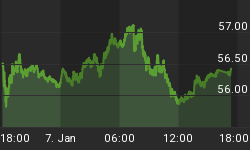The FIFTI Index is a measure based on fifty opinions of independent investment advisors with free newsletters and web site market forecasts. FIFTI1 is the acronym for Free Information From The Internet. It is one of the tools that www.investorsinternet.com uses to gauge the stock market's direction for its Members and Subscribers. Because the opinions are not those of financial professionals who may have a vested interest in being optimistic about the market rising, the FIFTI Index is more reactive to changes in the market place than many other surveys.
In advance of the Federal Reserve's statement on Tuesday, December 13, many of the newsletters and Internet sites have adopted a neutral stance, reasoning that the Fed's statement will move the market over the short-term. As a result the FIFTI Index is showing a large percentage of neutrals (38%), and fewer bulls and bears on the market heading into the year end than in previous weeks. The short-term bulls in the FIFTI Index outnumber the bears 41% to 21%.
Aside from the Federal Reserve, the main drivers of opinions on the market for the remainder of this year are the positive momentum, and the bearish indicators. Price action has been range bound since the S&P 500 hit 1,270 more than two weeks ago, and 1,248 four days later, so price is not determining opinions.
Markets driven by momentum are difficult to judge. As those newsletters and Internet sites that are explicit enough to quote figures point out, the safe way to play the market is to wait for price to break out from its current range - hence the neutral opinions. Current popular range limits for the Nasdaq are below 2,220 or above 2,280, for the S&P 500 from 1,248 to 1,270, and for the Dow 10,700 to 10,950 or 11,000.
Those who are convinced that the market will be higher at the year end say that the last two weeks has been a normal consolidation after a strong bull run from the middle of October. The trend is up, chart patterns for the major indexes are good, breadth has improved greatly, the Nasdaq and the Dow Transportation Index are leading the way, and it is the season for the market to rise.
The bears agree that some things are looking good - too good. For example, as www.joe-duarte.com freely points out, the Market Vane Bullish Consensus is at 70%, which is so good that it is bearish. When the S&P 500 Index was rising steeply on Friday, Mike Paulenoff of www.mptrader.com, in his free Mid-Day Minute newsletter, was the first to show that the strength of the rise was suspect and predicted a corrective down-leg, which is exactly what started an hour and a half before the close on Friday.
The main case for the bears is made by the indicators. For example, Larry McMillan of www.optionstrategist.com in his free Weekly Update refers to market breadth being overbought and the $VIX making higher lows and higher highs, which is a bearish pattern. Matt Davio at www.peternavarro.com shows a chart of the $OEX divided by the $VIX currently higher than it was in the year 2000. Price Headley of www.bigtrends.com in his free Market Outlook tells us that the Dow has bearish MACD and stochastic signals.
Other Free Information From The Internet (FIFTI) that supports the short-term bear's case includes traders taking profits from the recent rise and a coming change in the market that will eliminate Nasdaq's leadership.
Medium term, which is after the end of the year, there are fewer neutral opinions and more of the experts forecast problems, but the bulls still outnumber the bears in the FIFTI Index - 48% to 29%. Oil, housing, commodities, gold, inflation, the dollar, the Federal Reserve, the money supply, the deficits, foreign investments, corporate profits, Japan, China, the consumer, wage growth, and other economic factors are evident in the arguments of the bulls and the bears, depending on which factors convey an advantage. However, there is one thing that the independent writers do agree on - it is not the time to buy and hold for the long term.
1 The FIFTI Index is based on Free Information From The Internet, and in particular, on advice provided by fifty independent newsletter and Internet site writers selected from the book "The Investor's Free Internet".
















